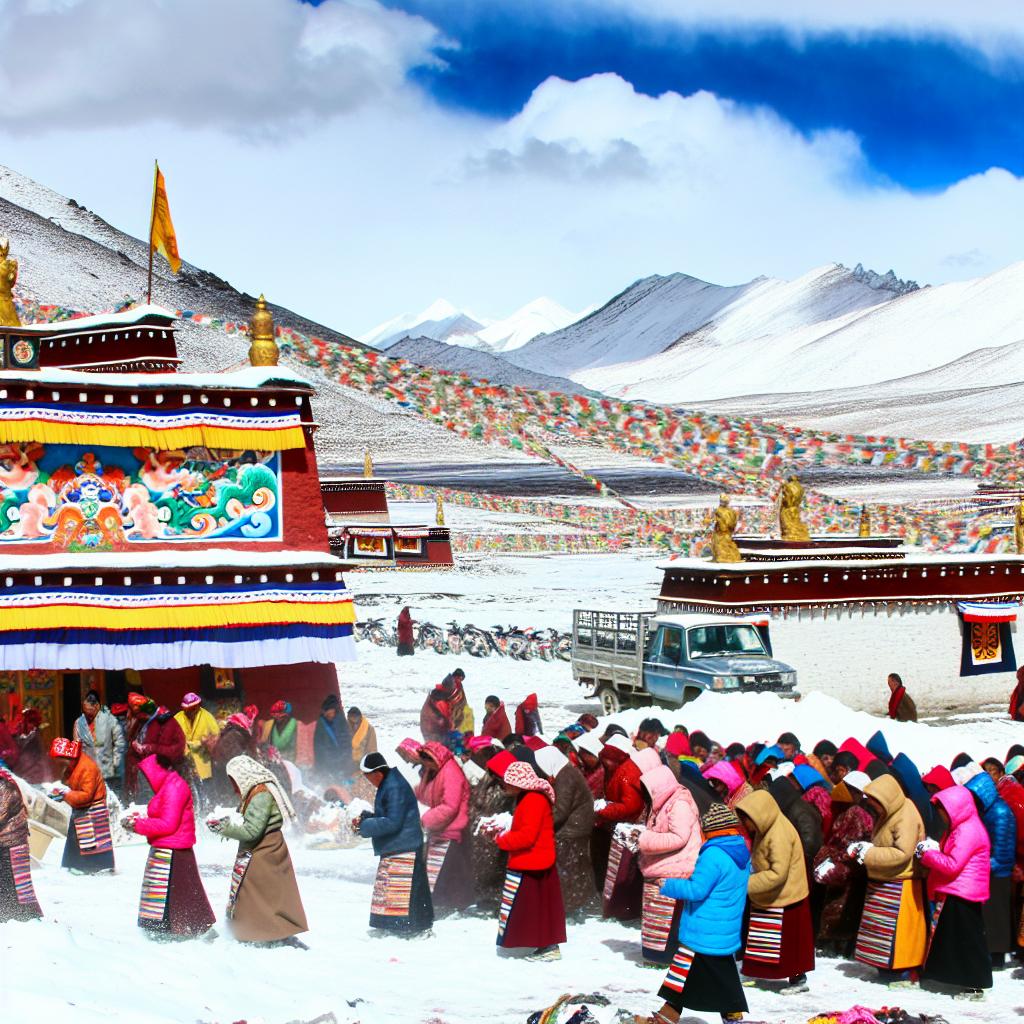The Significance of Losar in Tibetan Culture
Losar, the Tibetan New Year, holds immense significance within Tibetan culture. This key event marks the commencement of the new year in the Tibetan lunar calendar. Celebrated with a host of traditional customs and rituals, Losar typically takes place in late January or February, and spans over multiple days. Although the festival lasts 15 days, the main celebrations are concentrated in the first three days, each having its own unique focus and activities.
Historical Background
The roots of Losar extend back to the pre-Buddhist era in Tibet. Initially, it was a spiritual festival primarily associated with the Bon religion. During this time, people performed rituals involving large quantities of incense to appease local spirits and deities. The advent of Buddhism in Tibet led to the evolution of Losar into its current form, incorporating Buddhist principles and practices into the celebrations. Thus, while the festival has retained its original essence, it has also adapted to reflect the spiritual and cultural transformations within Tibetan society.
Cultural Practices and Traditions
Losar is characterized by a blend of ceremonial and societal elements, making it both a spiritual and communal festivity. Several important activities precede the festival, particularly the period known as *Gutor*. This involves thorough cleaning of homes, a symbolic gesture aimed at eliminating past misfortunes and negative energies. By doing so, families prepare their homes for the auspicious energy of the new year.
The first day of Losar, known as *Lama Losar*, is centered around spiritual engagement. Tibetans visit monasteries to pay respects to their spiritual leaders and to receive blessings. The day’s rituals are intended to provide guidance for the coming year, emphasizing introspection and spiritual renewal. The second day, referred to as *Gyalpo Losar*, focuses on governmental and administrative aspects. During this day, officials exchange greetings, and public ceremonies are held, highlighting the societal structure and governance. The third day shifts the focus to the sanctity of home and family. On this day, family gatherings involve traditional food, dance, and music, creating an atmosphere of joy and togetherness.
Traditional Foods and Festivities
Food is a pivotal element in the celebration of Losar. One notable dish is *Guthuk*, a noodle soup consumed on the eve of Losar. The soup has a symbolic dimension, with various hidden items used in a playful manner to predict future fortunes. Additionally, *Khapse*, a type of deep-fried pastry, is crafted in various designs and sizes. These pastries are more than just treats; they are integral to the festive mood of Losar, representing abundance and prosperity.
Spiritual Significance
Beyond the cultural framework, Losar is imbued with spiritual significance. It is a period when rituals are performed to honor deities and to seek protection and prosperity for the forthcoming year. Many Tibetans engage in *pujas*, or prayer ceremonies, offered for blessings from higher powers. The festival serves as a poignant reminder of the importance of compassion, peace, and positive moral conduct in everyday life. The interweaving of these values into the celebrations underscores the festival’s role in preserving and nurturing spiritual well-being.
International Observance
Although Losar is primarily a Tibetan festival, its influence transcends borders, with celebrations by Tibetan communities across the globe. In countries like Nepal, India, and Bhutan, where significant Tibetan populations reside, the festival is acknowledged and observed with similar vigour. These international festivities cultivate a sense of community and reinforce cultural identity among Tibetans in the diaspora. They also provide an avenue for non-Tibetans to experience and appreciate the richness of Tibetan culture.
In conclusion, Losar is much more than a simple New Year celebration. It stands as a complex tapestry of tradition, spirituality, and social engagement. The festivities reflect the unique cultural lineage of Tibet, serving as an integral component of Tibetan identity. While still deeply rooted in historical and religious traditions, Losar remains vibrant and relevant, adapting to the dynamics of modern society while fostering unity and continuity within Tibetan culture.

